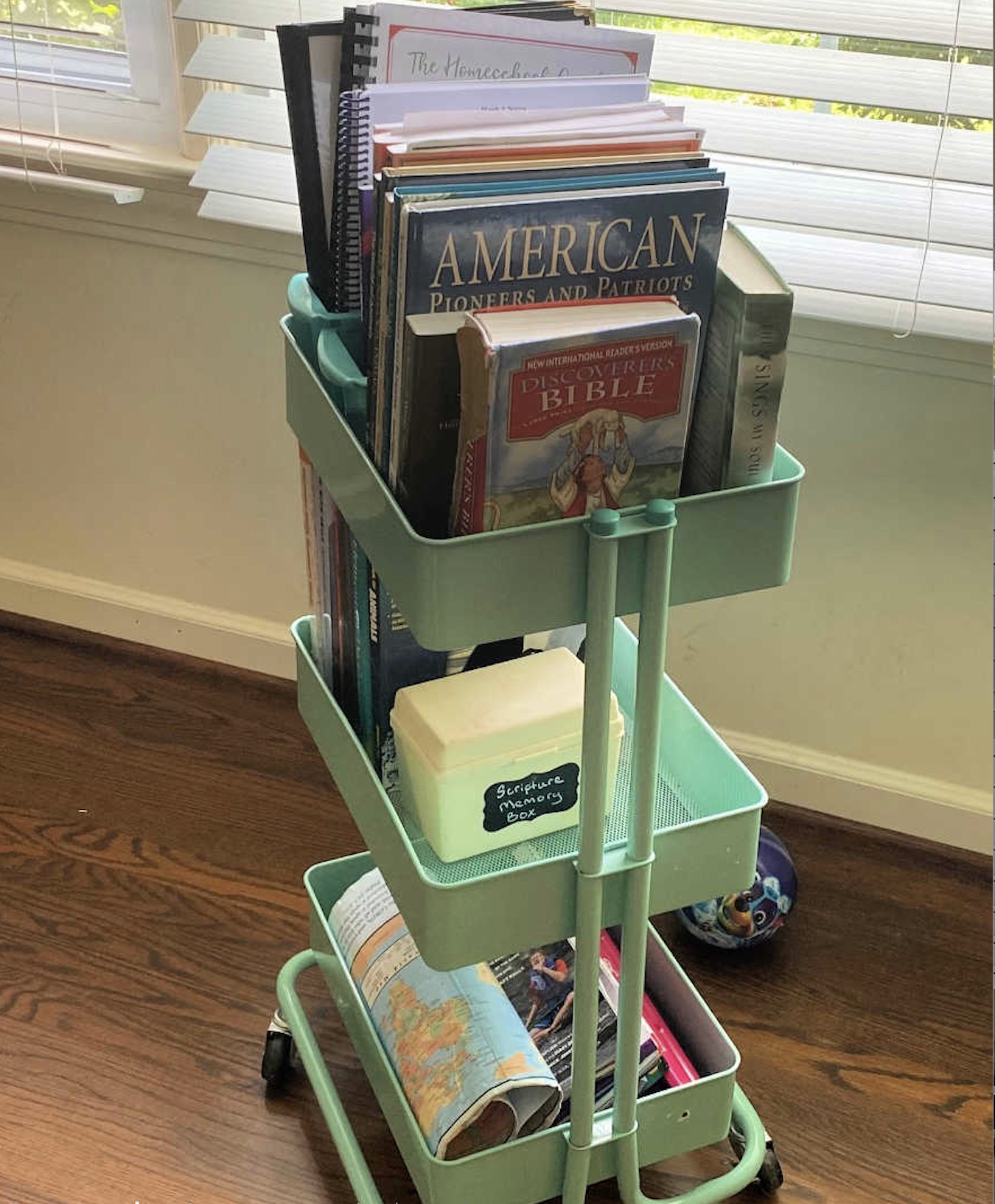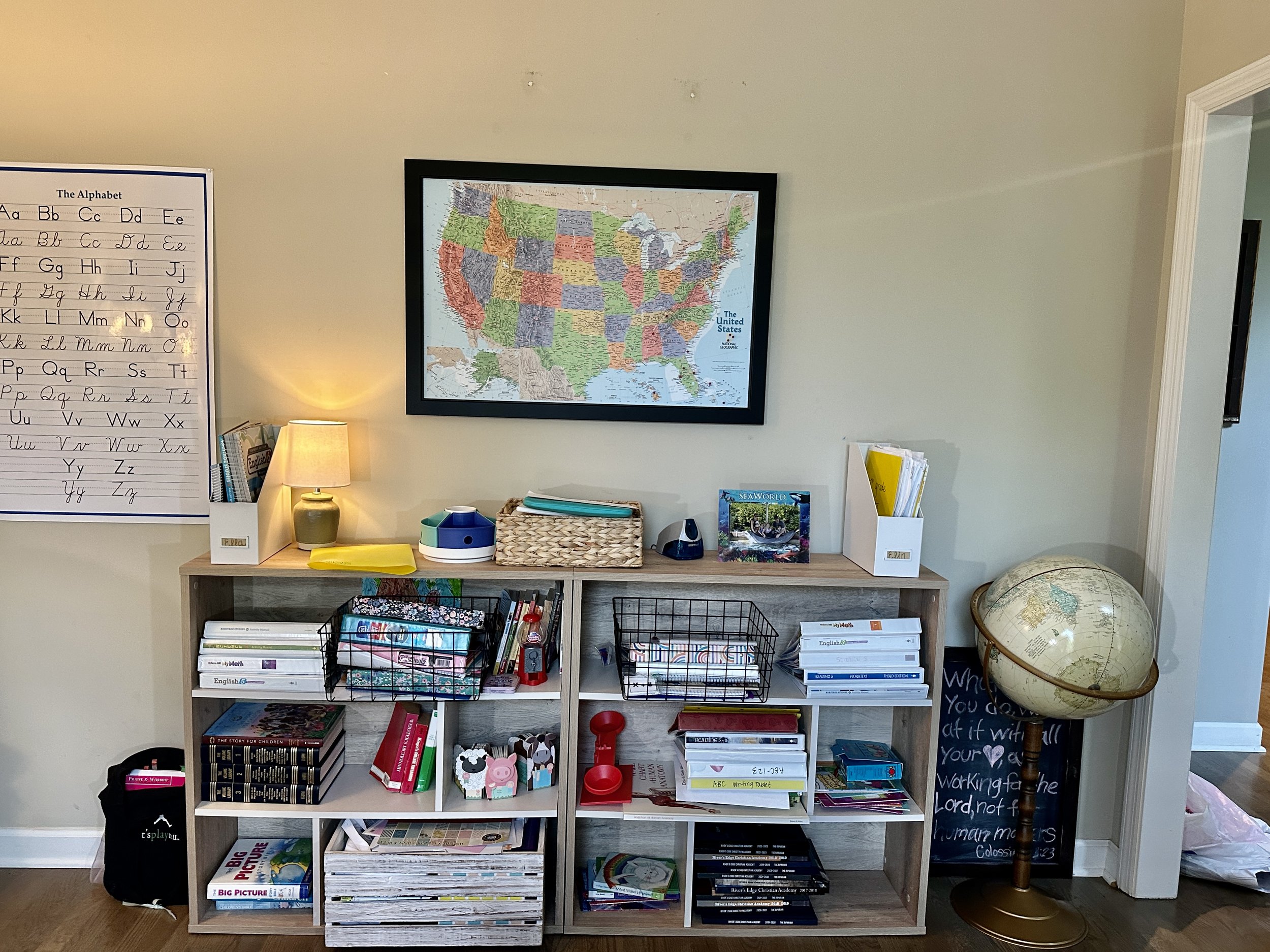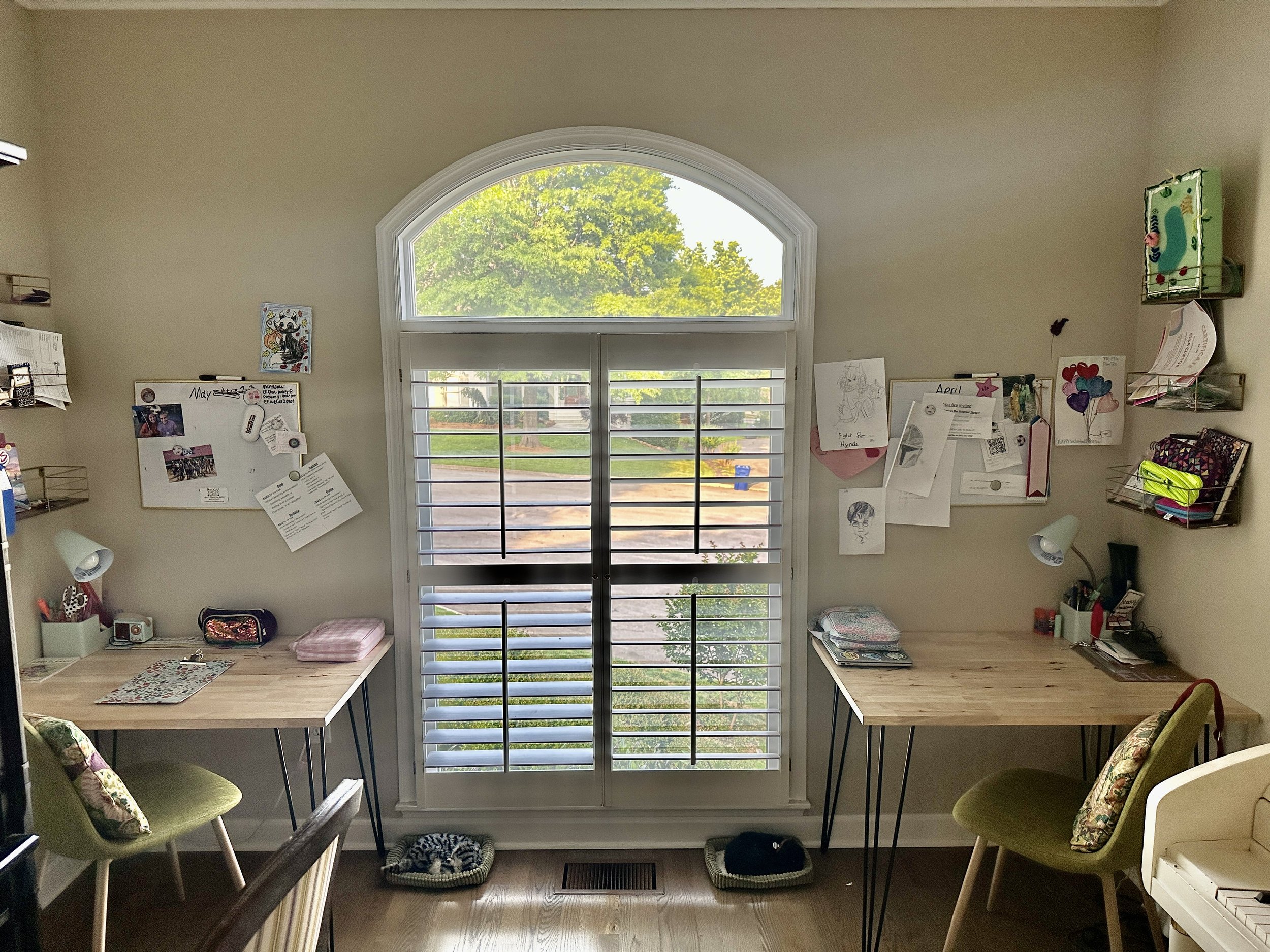Learning at home, whether it is in a homeschool setting or just practicing skills and studying for tests, can often be a struggle for families. Children are busy with sports, friends, lessons, and more. They don’t always want to give you 100% when it comes to their studies. Often siblings, televisions, and neighbors ringing the doorbell can be a distraction. In our last blog we discussed some basics for creating a good learning environment. And in this blog, we’ve consulted the experts and loved the advice they gave, especially regarding homeschooling.
When setting up a learning/study space, it’s important to remember that it needs to be organized and easy for kids to navigate on their own. If a space is chaotic, it creates stress and frustration, and those are the last things any parent needs when trying to help their child learn and practice new skills. We’ve asked some friends who are homeschooling now, or have in the past, what tips they have for best managing a learning space. Here are some helpful tips and pictures they shared with us!
Rachel: Their family was a homeschool family in 2020 and then participated in a homeschool/co-op after that. Rachel was a teacher before working for Help You Dwell, so she already had a good understanding of how to teach concepts and lesson planning/pacing.
Tip: Switch it up. While they had a designated homeschool area in the dining room, they often went to other tables or areas in the house, and they got OUTSIDE as much as possible. They even sat on the roof a couple times! Rachel also mentioned the importance of taking field trips to help with learning and visiting the local library for reading time and to check out books. Learning doesn’t have to always take place at a desk. Younger kids do well with movement and change every 20-30 minutes.
Tip: Keep it simple. Too much visual noise on the walls and on desks/tables is overstimulating and too busy/distracting for little ones. It’s also easier to change things up as the year goes on as you are learning about various places and concepts.
Tip: Work for incentives! Kids are motivated by having goals and something to work toward. Make sure that you do things to keep them motivated and moving forward each day.
Heather: She has been homeschooling for 15 years. She has held homeschool in a dedicated room, but she’s also had to teach from the kitchen table when their family was between homes in an apartment. She doesn’t stick to a set schedule each day but does follow the same rhythms with her kids each day. Sometimes school is in the morning and sometimes it is at night. Heather also says she loves to travel and take trips with her kids to help with learning. She’s taken them to 48 states and says sometimes it’s those moments when you end up chasing a rabbit trail that the kids remember the most. If they are curious about something, Heather believes that you should let kids explore and go deeper. She feels there is immense value in going on field trips and getting out and learning from the real world.
Tip: Storage is important. When she had a dedicated room to teach in, she built in desks and used custom made cabinets for storage. She currently teaches in her home’s library and uses a bookshelf for storage. Each of her kids had a dedicated shelf for their workbooks and supplies, She also utilizes rolling carts for her teacher manuals and books she may be reading with her kids. She has a turn in basket on the wall where the kids know to place their work and she can easily grab it to grade. Heather loves magnetic whiteboards on her walls in their homeschool room AND in their kitchen. She says often they end up in the kitchen eating or snacking and it is nice to have a board in that room so that notes can be made, or concepts can be explained while everyone is sitting around the table.
Tip: Connect with others! The homeschooling network is HUGE. Heather emphasized the importance of connecting with other families during your homeschool journey. She said if you are a person who doesn’t love science experiments, reach out to others-there’s always someone in your network who would love to fill in the gaps where you might not feel confident. You can do the same in return!
Tip: Set expectations early. Heather likes to ease into learning at the start of the year. She staggers subjects and lets the kids get used to being back in “school mode” before diving in and trying to teach all subjects. But once they are in the groove she lays out their lessons and writes the to-do list for the day in the kids’ notebooks each morning. She has the semester planned on a calendar for reference so that she can pace herself in regards to teaching all standards.
Amber: Her family has been homeschooling for 8 years. She has 4 kids and has a dedicated room to teach in. Her kids participate in a co-op, so they are at school for 3 days and home for two. Amber loves the flexibility homeschooling gives her family. They don’t have a set start time each day but do follow the same routine on days when they are home. She loves that there is such a big homeschool community in our area and has a group chat with other homeschool families. She loves seeking guidance and help from others and says having that sense of community and knowing others are out there to help when you need it is a huge blessing.
Tip: Set a routine early. At the beginning of the week, she prints lesson plans and her kids put them in their binders. They also pull all the worksheets they will need for the week and are responsible for keeping their binders in order. They know how to use the printer and have a list of their passwords posted on the boards by their desks so that they can be more independent. The kids know that when their learning time is over, everything must be put back in its place and cleaned up.
Tip: Use the wall space. She has handwriting posters, maps, and magnetic whiteboards on the walls above the girls’ desks. She houses materials for teaching and learning in a set of bookshelves with supplies (dictionaries, flashcards, math manipulatives, art supplies, etc.) that are easily accessible. She also has shelving along the sides of the walls by the desks for extra storage for books, journals and work they need to complete. Amber uses bigger desks against the wall for her two older children and a smaller desk in the middle of the room for her younger. It is important to have appropriate seating for younger students who are still learning basic fine motor skills.
Tip: Keep a calm environment. Amber’s room has a large window with natural light that streams in the room all day. She diffuses oils and plays music at times to help with concentration and maintaining a calming environment for learning. Her kids often use noise cancelling headphones or ear buds when they are learning. This also helps minimize distractions.
All three of these lovely ladies mentioned the same thing when we were wrapping up our interviews: GIVE YOURSELF SOME GRACE. They all said that at first it seems difficult, and you want to try to do it all, but really, if you are instilling a love for learning then you are doing “school” the correct way. There are also several great resources in Knoxville that could supplement what you are doing at home. Knox Forest School, Corelli Art and Forest School, and The Muse are a few of the places that have weekly programs for kids of various ages. Remember, you can’t do it all, and it’s ok to have others supplement when possible. Homeschooling isn’t easy, but it is flexible and can be an incredible experience for your whole family.












